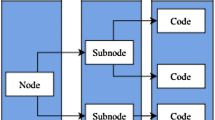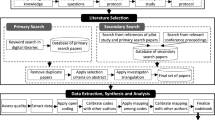Abstract
The paper examines how technology challenges conventional borders of national legal systems, as shown by cases that scholars address as a part of their everyday work in the fields of information technology (IT)-Law, i.e., computer crimes, data protection, digital copyright, and so forth. Information on the internet has in fact a ubiquitous nature that transcends political borders and questions the notion of the law as made of commands enforced through physical sanctions. Whereas many of today’s impasses on jurisdiction, international conflicts of law and diverging interpretations of statutes can be addressed by embedding legal safeguards in ICT and other kinds of technology, to overcome the ineffectiveness of state action by design entails its own risks, e.g., threats of paternalism hinging on the regulatory tools of technology. Rather than modelling people’s behaviour by design, the article suggests that design policies should respect individual and collective autonomy by decreasing the impact of harm-generating behaviour (e.g., security measures and default settings for data protection), or by widening the range of people’s choices (e.g., user friendly interfaces).
Similar content being viewed by others
Notes
See the Economist’s issue from 6 April 2006 with the special report on “the new paternalism: the avuncular state.”
References
Bekey, G. A. (2005). Autonomous robots: From biological inspiration to implementation and control. Cambridge, Mass: The MIT Press.
Bingham, T. (2011). The rule of law. London: Penguin.
Boyd, D. (2010). Social networks sites as networked publics: affordances, dynamics, and implications. In Z. Papacharissi (Ed.), Networked self: Identity, community, and culture on social networks sites (pp. 39–58). London: Routledge.
Butler, J. (2005). Giving an account of oneself. New York: Fordham University Press.
Cavoukian, A. (2010). Privacy by design: The definitive workshop. Identity in the Information Society, 3(2), 247–251.
Dworkin, G. (1988). The theory and practice of autonomy. Cambridge, Mass: Cambridge University Press.
Faden, R., & Beauchamp, Th. (1986). A history and theory of informed consent. New York: Oxford University Press.
Flanagan, M., Howe, D. C., & Nissenbaum, M. (2008). Embodying values in technology: Theory and practice. In J. van den Hoven & J. Weckert (Eds.), Information technology and moral philosophy (pp. 322–353). New York: Cambridge University Press.
Floridi, L. (2003). On the intrinsic value of information objects and the infosphere. Ethics and Information Technology, 4, 287–304.
Floridi, L., & Sanders, J. (2004). On the morality of artificial agents. Minds and Machines, 14(3), 349–379.
Goldsmith, J. (1998). Against cyberanarchy. University of Chicago Law Review, 65(4), 1199–1250.
Grodzinsky, F. S., Miller, K. A., & Wolf, M. J. (2008). The ethics of designing artificial agents. Ethics and Information Technology, 10, 115–121.
Hildebrandt, M. (2011) Autonomic and autonomous ‘thinking.’ Preconditions for criminal accountability. In M. Hildebrandt & A. Rouvroy (Eds.), The philosophy of law meets the philosophy of technology (pp. 141–160). Abingdon: Routledge.
Himma, K. (2009). Artificial agency, consciousness, and the criteria for moral agency: What properties must an artificial agent have to be a moral agent? Ethics and Information Society, 11(1), 19–29.
Hustinx, P. (2007). Opinion of the European Data Protection Supervisor on the Communication from the Commission to the European Parliament and the Council on the follow-up of the Work Programme for better implementation of the Data Protection Directive. Official Journal of the European Union, 2007/C 2551/01, July 25th 2007.
Jobs, S. (2007). Thoughts on music. Retrieved at http://www.apple.com/hotnews/thoughtsonmusic/ on September 20th, 2011.
Jutla, D. N. (2010). Layering privacy on operating systems, social networks, and other platforms by design. Identity in the Information Society, 3(2), 319–341.
Kallinikos, J. (2006). The consequences of information: institutional implications of technological change. Elgar, Cheltenham, Northampton, Mass.
Kant, I. (1795). Kant’s principles of politics, including his essay on perpetual peace. A contribution to political science. (edition 1891) (trans: Hastie W), Edinburgh, Clark.
Katyal, N. (2003). Digital architecture as crime control. Yale Law Journal, 112(6), 101–129.
Kelsen, H. (1949). General theory of the law and the state. Cambridge, Mass: Harvard University Press.
Kesan, J. P., & Shah, R. C. (2006). Setting software defaults: Perspectives from law, computer science and behavioural economics. Notre Dame Law Review, 82, 583–634.
Kuner, Ch. (2003). European data privacy law and online business. Oxford, London: Oxford University Press.
Lessig, L. (1999). Code and other laws of cyberspace. New York: Basic Books.
Lessig, L. (2004). Free culture: The nature and future of creativity. New York: Penguin Press.
Lockton, D., Harrison, D. J., & Stanton, N. A. (2010). The design with intent method: A design tool for influencing user behaviour. Applied Ergonomics, 41(3), 382–392.
Morozov, E. (2011). The net delusion: The dark side of internet freedom. New York: Public Affairs.
Nissenbaum, H. (2004). Privacy as contextual integrity. Washington Law Review, 79(1), 119–158.
Pagallo, U. (2010). As law goes by: Topology, ontology, evolution. In P. Casanovas, et al. (Eds.), AI approaches to the complexity of legal systems (pp. 12–26). Berlin: Springer.
Pagallo, U. (2011a). Designing data protection safeguards ethically. Information, 2(2), 247–265.
Pagallo, U. (2011b). ISPs & rowdy sites before the law: Should we change today’s safe harbor clauses? Philosophy & Technology, 24(4), 419–436.
Post, D. G. (2002). Against “against cyberanarchy”. Berkeley Technology Law Journal, 17(4), 1365–1383.
Prigogine, I. & Stengers, I. (1981). Vincolo, Enciclopedia Einaudi, 14, 1064–1080. Einaudi, Torino.
Tavani, H. T. (2007). Philosophical theories of privacy: Implications for an adequate online privacy policy. Metaphilosophy, 38(1), 1–22.
Tavani, H. T. (in press), Ethical aspects of autonomous systems. In M. Decker & M. Gutmann (eds), Information- and robot-ethics: Some fundamentals, Verlag Berlin, Germany.
Volkman, R. (2003). Privacy as life, liberty, property. Ethics and Information Technology, 5(4), 199–210.
von Ahn, L., Maurer, B., McMillen, C., Abraham, D., & Blum, M. (2008). reCAPTCHA: Human-based character recognition via web security measures. Science, 321(5895), 1465–1468.
WP 29. (2002). EU Working Party art. 29 D-95/46/EC. The international application of EU data protection law to personal data processing on the Internet by non-EU based web sites, WP 56, May 30th 2002.
WP 29. (2009a). EU Working Party art. 29 D-95/46/EC. Online social networking, WP 163, June 12th, 2009.
WP 29. (2009b). EU Working Party art. 29 D-95/46/EC. The future of privacy. WP 168, December 1st 2009.
Yeung, K. (2007). Towards an understanding of regulation by design. In R. Brownsword & K. Yeung (Eds.), Regulating technologies: Legal futures, regulatory frames and technological fixes (pp. 79–108). London: Hart Publishing.
Zittrain, J. (2007). Perfect enforcement on tomorrow’s internet. In R. Brownsword & K. Yeung (Eds.), Regulating technologies: Legal futures, regulatory frames and technological fixes (pp. 125–156). London: Hart Publishing.
Author information
Authors and Affiliations
Corresponding author
Rights and permissions
About this article
Cite this article
Pagallo, U. Cracking down on autonomy: three challenges to design in IT Law. Ethics Inf Technol 14, 319–328 (2012). https://doi.org/10.1007/s10676-012-9295-9
Published:
Issue Date:
DOI: https://doi.org/10.1007/s10676-012-9295-9




